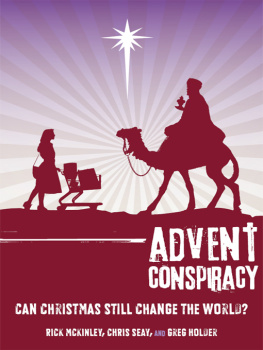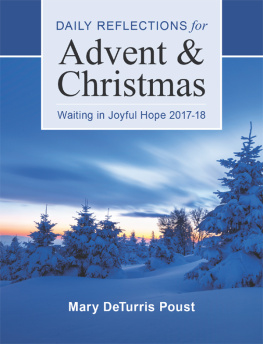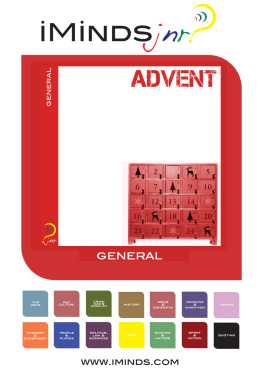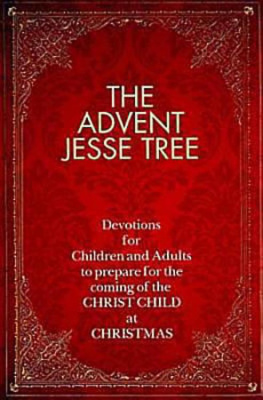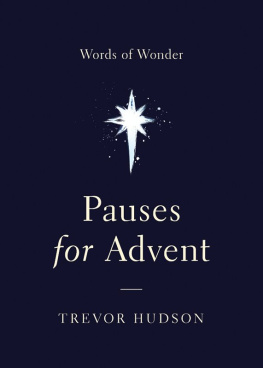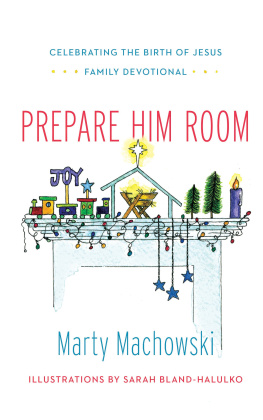Emmaus Road Publishing
827 North Fourth Street
Steubenville, Ohio 43952
2014 Regis J. Flaherty
All rights reserved. Published 2014
Printed in the United States of America
17 16 15 14 1 2 3 4 5 6
Library of Congress Control Number: 2014952823
ISBN: 978-1-63446-001-9
Unless otherwise noted Scripture quotations are taken from The Revised Standard Version of the Bible: Second Catholic Edition, copyright 1965, 1966, 2006 by the Division of Christian Education of the National Council of the Churches of Christ in the United States of America. Used by permission. All rights reserved. The Revised Standard Version of the Bible: Second Catholic Edition was published in 2006 with ecclesiastical approval of the United States Conference of Catholic Bishops.
English translation of the Catechism of the Catholic Church for the United States of America copyright 1994, United States Catholic Conference, Inc.Libreria Editrice Vaticana. English translation of the Catechism of the Catholic Church: Modifications from the Editio Typica copyright 1997, United States Catholic Conference, Inc.Libreria Editrice Vaticana.
Some Scripture texts in this work are taken from the New American Bible, revised edition 2010, 1991, 1986, 1970 Confraternity of Christian Doctrine, Washington, D.C. and are used by permission of the copyright owner. All rights reserved. No part of the New American Bible may be reproduced in any form without permission in writing from the copyright owner. In the text these verses are identified as NAB.
Cover design and layout by
Theresa Westling
Cover artwork:
Madonna and Child, 1907-08; Stokes, Marianne (1855-1927)
Wolverhampton Art Gallery, West Midlands, UK/Bridgeman Images
Imprimatur
Most Rev. David A. Zubik
Bishop of Pittsburgh
September 23, 2014
The nihil obstat and imprimatur are declarations that work is considered to be free from doctrinal or moral error. It is not implied that those who have granted the same agree with the content, opinions, or statements expressed.
To my wife Libbie, my bride and helpmate for thirty-nine years
TABLE OF CONTENTS
FOREWORD
Every Advent, beginning in 2007, I prepared a talk on a theme of the season. I chose a character from Scripture as the uniting element in the presentation. I delivered these conferences not only at the retreat center where I live and work, but also at parishes and to various Catholic organizations. The chapters in this book are the development of my notes from those conferences. I offer them to you because some, who heard these talks, told me that they were helpful in their personal preparation for the coming of the Lord.
This book is not a Bible study, but spiritual reflections on the personages of Advent and Christmas and on what they teach us. My reflections certainly do not exhaust all that a person can learn from these biblical characters and themes.
I thank my wife Libbie, my youngest daughter Beverly Paul, and my friend and brother in Christ Richard Grebenc for the invaluable suggestions they provided in the development of the book. It is a far better product due to their help.
Whenever I put my fingers on the keyboard to work on this book, I want you to know that I asked our Lord to bless those who would eventually read its pages. May He, in His great mercy, use them to draw you to the true wonder and gift that is found in the liturgical seasons of Advent and Christmas.
Regis J. Flaherty
June 2014
INTRODUCTION
Preparing for the Coming of Jesus
Do you remember Christmas when you were a child? I recall the excitement that the approach of the holiday created in me. During the month of December, Christmas was never far from my thoughts. What gifts would I receive? With little resources, what present could I give to my mom and dad? Of course, the closer to December 25 th , the more my excitement intensified.
On Christmas Day, we seven children would sit at the top of the steps on the second floor waiting until the entire family assembled. By that time we could hardly sit still. When my parents gave the okay, we would run down the stairs and into the dining room. There, at the place where we sat for every meal, we found treasures of our parents love.
Then we had the opportunity to give to Mom and Dad our homemade gifts or hand-drawn certificates, in which we pledged extra work and service. My parents appreciation for our meager offerings was always effusive and accompanied with hugs and kisses.
In my parents home the focus was not only on the secular. They made sure that the spiritual aspects were front and center. The Catholic school I attended also helped me focus on the
coming of Christ and the personal preparation that entailed. Mass in the festively decorated parish church and a visit to the manger were also causes for excitement and joy.
When I think of those childhood days, I cant help but recall the words of Jesus, Truly, I say to you, unless you turn and become like children, you will never enter the kingdom of heaven (Matthew 18:3).
We should find that childlike anticipation as we celebrate Advent and prepare for Christmas. The gifts of these liturgical seasons are of the greatest spiritual value. We receive the ultimate gift, Jesus, from our heavenly Father. We also can offer to God our seasonal gifts, meager in comparison with His, but accepted by Him nonetheless.
The Church gives us four weeks of Advent and encourages us to consider three epiphanies of Jesus.
THE COMINGS OF THE LORD
First, we look back to the original event. We celebrate the birth of Jesus, God become man. Please pause for a moment on that thought. The words have become perhaps too familiar to us. We tend to lose the awe that should well up in us when we contemplate that God became man. We need to recapture the attitude of the child whose eyes are filled with wonder on Christmas morning. If God became incarnate, taking on flesh, history is forever changed. If He did not, Christians are to be pitied and rightly should be the laughing stock of twenty centuries (cf. 1 Corinthians 15:19).
That little baby in the crib is God . No other major religious leader has made this claim, except Jesus. This infant, whose birth we celebrate at Christmas, is set for the rise and fall of many (Luke 2:34). Christs birth is the pivot of historycategorized by time before or after this event. His birth not only brings hope to those who live after the Nativity, it reaches back to Adam and Eve, expelled from the Garden of Eden, and to all people up to His birth. He is their hope as well. Consider, then, the micro effect. Salvation is offered to you and me . We are people of hope. We have a future. God became man for my salvation. That knowledge should make us incredibly thankful.
In Advent and Christmas we ask ourselves, Do I thank God for the great gift of His birth that has changed history and opened heaven to me?
IN THE HERE AND NOW
Secondly, Jesus is still with us in Word and Sacrament. Whenever we pick up the Scriptures and read them prayerfully, He speaks to us. In Baptism, He welcomes the recipient into the family of God and joins him or her to Himself as brother. When we go to Confession, He forgives us. For those in a sacramental marriage, His grace helps the couple to live their vocation. Most amazingly, He becomes truly present on our altars at Mass and resides in every tabernacle where the Blessed Sacrament is reserved.



